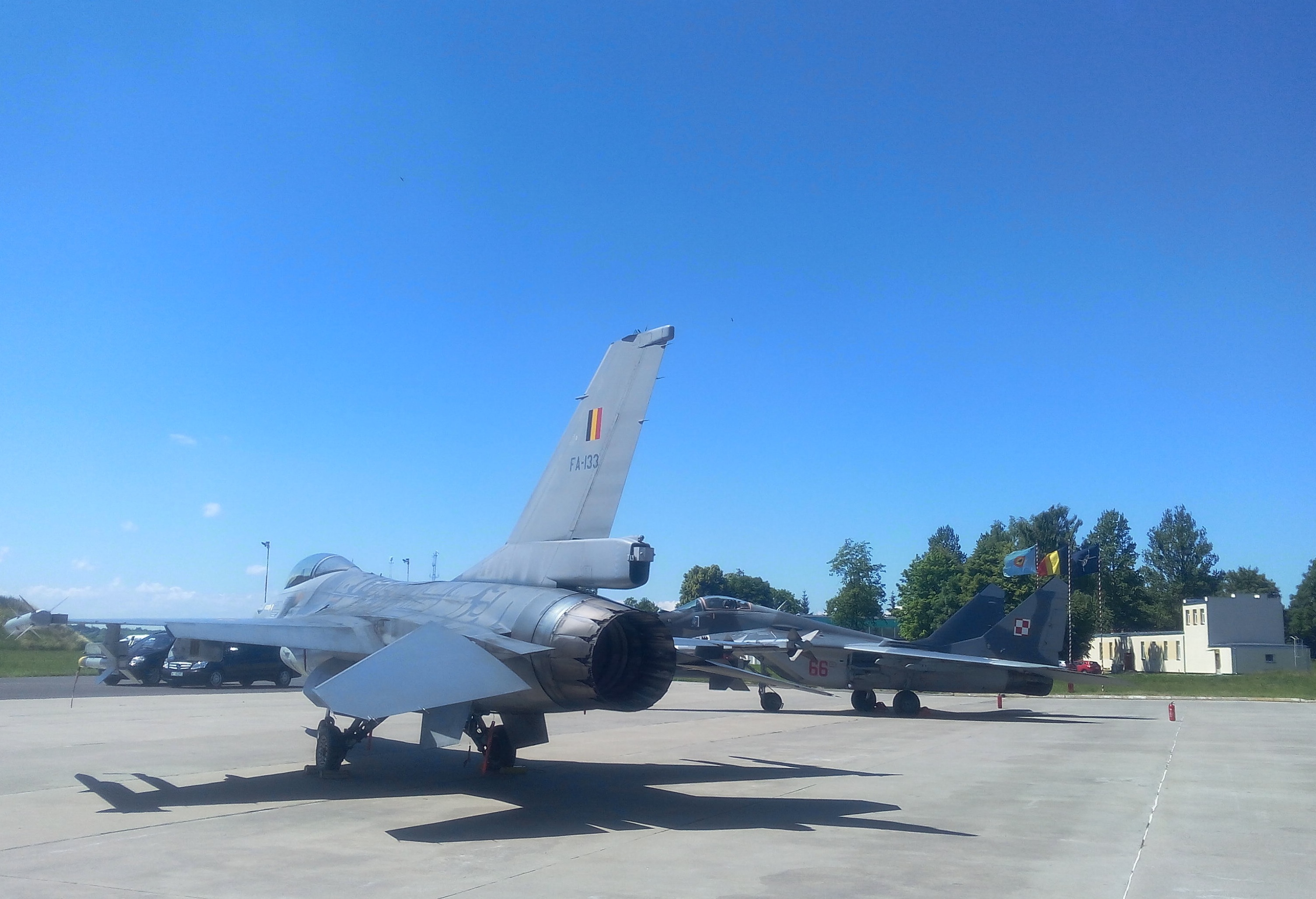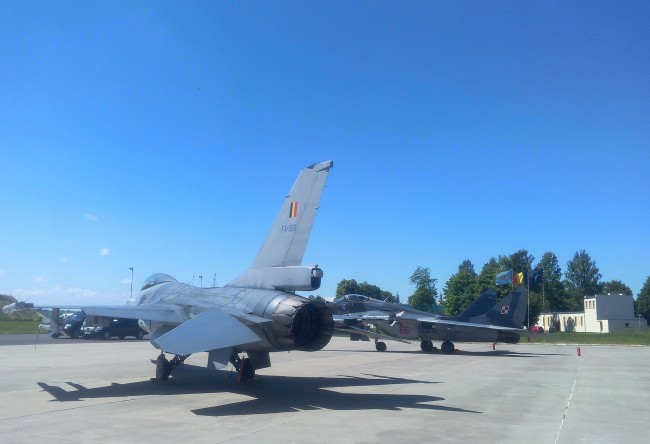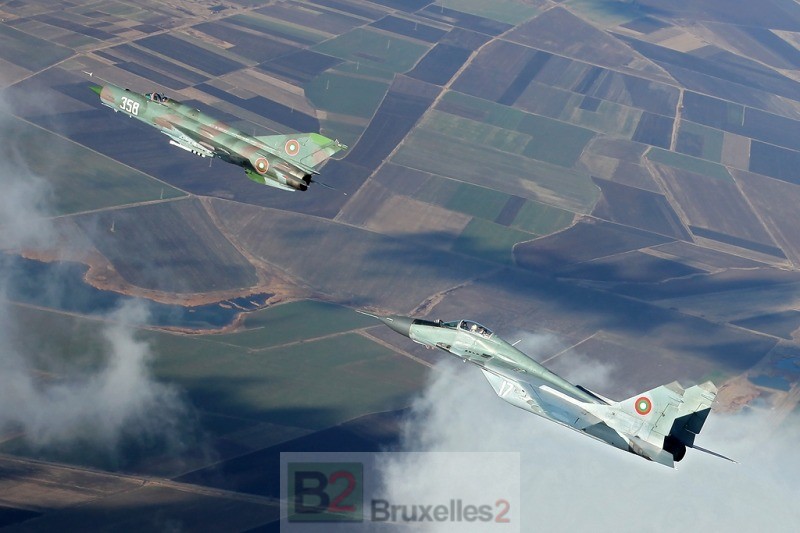In Malbork, Belgian F-16s keep watch
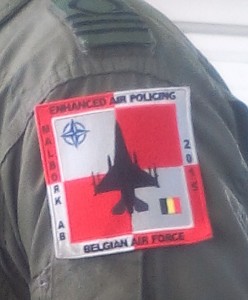
(BRUSSELS2) The four Belgian F-16s, based in Malbork, Poland, are not idle every day. As part of the "reassurance" arsenal put in place by the Atlantic Alliance at the Wales summit in the face of Russia's new, more aggressive attitude, they aim to reassure the Baltic countries in the face of the more aggressive attitude of Russia in recent months as to strengthen the protection of NATO airspace. The Russians are very close, the oblast of Kalilingrad is only barely 80 km away as the crow flies.
4 teams for aerial surveillance of the Baltic countries
Today there are 4 air detachments which provide surveillance of the Baltic skies, or of the offshore international area: in addition to the 4 Belgian F-16s, there are the Italian Eurofighters and Norwegian F-16s, which operate from Šiauliai in Lithuania, and the British Eurofighters, based at Amari in Estonia to the far north. It is the Norwegians who provide the BAP (Baltic Air Policy) on-call duty, meaning that they are available 24 hours a day. While the others who are in reinforcement (Enhanced Air Policing or EAPM) take on-call duty every other week. In any case, they remain available if necessary to return to alert mode. " We have six hours to return to alert mode explains an officer.
14 alerts
Since the start of their deployment in January, Belgian planes have taken off for 14 real alerts for Russian planes at the edge of the zone. And it has accelerated in the last two months. 2/3 of the interventions (10) take place in May and June, against 4 in the first four months of the Belgian presence. Of these 14 alerts, eight led to visual identification, near the aircraft (see box).
An increase at particular times
Russian flights particularly increased during NATO exercises (Baltops 2015) as well as during a major Russian exercise, which took place off Kaliningrad. Most flights come from Saint Petersburg, pass along international waters and enter the Baltic (which concentrates more than half of Russian flights). This puts the base of Amari (Estonia) in the front line.
Net increase in number
« Since the last Belgian deployment in Lithuania in 2013, this has accelerated, there are more Russian flights, but also from NATO” remarks an officer. Between 2013 and 2015, there was an increase of almost 50% in tactical transport flights which increased from 134 to 179 and 213 like fighter or bomber aircraft flights which increased from 31 to 54 and 132.
Bodybuilding
« Everyone does a bit of bodybuilding. We have returned to a rhythm of the Cold War.. These are not errors or technical incidents. Nor even military objectives. It is an attitude, decided at high level of the Russian army, with a political objective: to show Russian power, also to show that 'here' they are one as at home “Explains to B2 a senior Belgian officer.
No territorial violation
The "incidents" are not really " serious ". There is thus no violation of the Baltic or Polish territorial zones. Russian planes fly over international waters. They simply " do not write flight plans, do not respond to indications and cut out transponders ».
A well-honed interception technique
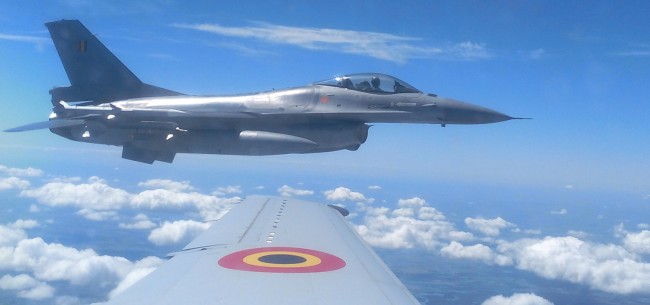
visual recognition
For our arrival at the Malbork base, we are entitled on board the ministerial Embraer to an accompanying exercise. The two F-16s are approaching the aircraft, one right, one left, escorting it, flapping their wings for recognition, visual signals. But nothing more..." The objective is to identify the plane, its type, its armaments, and follow it to the limits of the airspace. » It is an “intercept, identify, shadow” mission.
10 to 12 minutes to be in the air
The planes link weeks of alert (hot week) and weeks of break (cold week). During the hot week, the planes take the QRA with 2 planes 24/7. According to the NATO contract, the two planes must be ready to take off in 20 to 30 minutes, everything between the transmission by the CAOC of Uedem, to the staff in Warsaw, then to the control tower and finally takeoff. " In reality, we manage to take off in 10 to 12 minutes in real time” for what are called Alpha Scrambles, real alerts.
Armed planes
Each aircraft is armed with 2 CATM 120B medium-range air-to-air missiles and infrared missiles in close combat. It is also equipped with two cans of fuel to ensure longer missions up to 2h to 2h30 and to reach the Baltic Sea. NB: Belgian aircraft do not provide surveillance of Baltic airspace and international airspace. They do not intervene at all in the Polish area, which remains the responsibility of Warsaw.
An ideal training ground
During the cold week, it is not really about rest. Planes continue to fly for training. As one officer explained, the advantage of this area is " have certain facilities for flying that we do not have at home ". There is " more flexibility, more latitude for military flights compared to civilian flights, possibilities of low altitude flight, and larger areas too ". Poland is (a little) bigger than Belgium. In addition, the Poles have " an extremely permissive space that allows training shots on the ground ».
- NB: Malbork has two air zones, '01' west of Malbork with 3-4 planes and '02' which can hold up to 20 planes. The Malbork base has a Search and Rescue (SAR) service and a maritime SAR. It has "several navigation aid systems as the base commander points out: " ILS (Instrument landing system), TACAN (Tactical air navigation system), NDB (Non-directional radio beacon), PAR (Precision approach radar), Calvert and Papi (Precision approach path indicator), safety systems such as a cable Bak12 stop, and a category 6 fire department”.
The Tango Scramble to train
There are Tango Scramble = training as in real life (the T = Training). Very useful flights to train pilots on alerts, but also to work in cooperation with allies, whether in the air or on the ground. In the Lithuanian space, it is also a question of training the Lithuanian combat controllers of the GCI of Karmelava in coordination with the Norwegians and the Italians.
A reminder in QRA during training
During these periods, the aircraft fly unarmed, with the possibility of recall in QRA configuration, within 6 hours. " It happened on June 9, a few minutes before the training takeoff, the CAOC of Uedem requested an intervention a few hundred miles from here. We had two possibilities then: either prepare the plane for an interception flight, with the armaments, or take off more quickly without armament. It is this possibility that we have chosen. We managed to take off in 10 minutes. »
Belgian secondment
Reduced to the essentials
The Belgian detachment is reduced to the essentials. " We have 49 people where the Dutch had 65 people and the Americans 120 people to carry out the same mission. The workforce is reduced but operational. A point on which the minister, Steven Vandeput, insisted.
A mini air base
The structure of the detachment is a mini-airbase in itself: an operational section (pilots and mechanics), a maintenance section (CIS, Log…) and a support section, made up of 25 people (Admin, Medic, Welfare, Kitchen). A team of firefighters is also present in the event of an incident or fire on an aircraft. The cuisine remains very Belgian (I was able to test it, fries and mayonnaise are there :-)).
A translator is also present. It is " Extremely important insists the head of the detachment. While some soldiers speak English, others even at certain levels of command speak only Polish. The mixed detachment, French-speaking and Dutch-speaking. 30 personnel come from Florennes / 10 from Kleine Brogel, 4 from the land component.
Polish assistance
Poland as Host nation support provides the Belgians with everything they need. A large hangar to accommodate 4 aircraft simultaneously and all spare parts and technical elements. " All sections are together. And this allows a symbiosis between everyone says the head of the detachment. The alert planes each have a hangar as close as possible to the runway. While the 4 pilots and on-call mechanics are in a building not far from the runways. An officer is seconded to the base control tower to liaise between the Belgian contingent and the Poles.
(Nicolas Gros-Verheyde, in Malbork)
NB: the names of the pilots and the staff remain anonymous. Since the intervention in Iraq, these soldiers have been potential targets. Precautionary measures are in order.
8 alerts in May - June
On May 21, 2 Tupolev 22 Backfire supersonic bombers, of the strategic air force, The Belgians took off with the Italians. The planes were intercepted by the Italians who turned back.
On May 26, the planes intercepted, without a flight plan, an unresponsive An-26 transport plane. It is tracked to the Kaliningrad area.
On May 27, during a T-Scramble exercise over Lithuania, the F-16s were sent on a Sukhoi 24 (Fencer) flying over Kaliningrad. It stays in this area.
On May 28, same story, the plane Sukhoï 24 left Kaliningrad.
On June 9, 2 planes took off for an Ilyushin IL-20 Coot A, an electronic warfare and surveillance aircraft, which did not go out. Two hours later, the same aircraft exited the area and photographed.
On June 11, an Ilyushin IL-20 Coot A was intercepted by the Danish QRA, then taken over and “accompanied” by the Belgians.
On June 13, it is the opposite, an Ilyushin IL-20 Coot A is intercepted by the Belgian F-16s, the F-16s of the Danish QRA take over.
On June 15, interception of a Sukhoi 24 which regularly leaves the Russian zone, during a major combined exercise between the Russian navy and aircraft. The Belgian planes are then " illuminated by Russian ships ". A Coot-A is intercepted as soon as it leaves Kaliningrad.
Lire aussi
